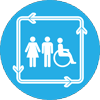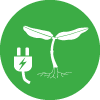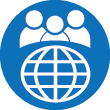- Announcements and miscellaneous
- New publications (books, articles, websites, videos)
- New JMP progress report
New JMP progress report
88 views
- paresh
-
 Topic Author
Topic Author- Moderator
- Budding WASH researcher, especially interested in governance, public policy, finance, politics and social justice. Architect, Urban & Regional planner by training, Ex. C-WAS, India.I am a patient person :)
Less- Posts: 373
- Karma: 7
- Likes received: 141
Dear All,
Dave brought to my notice that a new progress report on household WASH, titled "Progress on household drinking water, sanitation and hygiene 2000-2024: special focus on inequalities", has been published. It can be accessed here .
Report highlights
Between 2000 and 2024, the global population rose from 6.2 to 8.2 billion. Over this period, about a quarter of the population (2.2 billion) gained access to safely managed drinking water and a third (2.8 billion) to safely managed sanitation. Yet progress has been uneven and the number of people left behind has fallen more slowly. Since 2015, the distribution of the unserved has shifted: the proportion of the population with sanitation services has risen quickly in rural areas while staying relatively flat in urban areas. However, in terms of raw numbers most of the gains have been realized in urban areas. Basic hygiene access has improved, especially in rural areas; and the share of people unserved has increasingly concentrated in low-income countries.
I encourage members to explore the data and share their findings. I am sure they will interest many.
Dave brought to my notice that a new progress report on household WASH, titled "Progress on household drinking water, sanitation and hygiene 2000-2024: special focus on inequalities", has been published. It can be accessed here .
Report highlights
Between 2000 and 2024, the global population rose from 6.2 to 8.2 billion. Over this period, about a quarter of the population (2.2 billion) gained access to safely managed drinking water and a third (2.8 billion) to safely managed sanitation. Yet progress has been uneven and the number of people left behind has fallen more slowly. Since 2015, the distribution of the unserved has shifted: the proportion of the population with sanitation services has risen quickly in rural areas while staying relatively flat in urban areas. However, in terms of raw numbers most of the gains have been realized in urban areas. Basic hygiene access has improved, especially in rural areas; and the share of people unserved has increasingly concentrated in low-income countries.
- Achieving the 2030 targets for safely managed services is increasingly out of reach
- The population without WASH services is declining except in urban areas and low-income countries
- Despite gains since 2015, 1 in 4 – or 2.1 billion people globally – still lack access to safely managed drinking water, including 106 million who drink directly from untreated surface sources
I encourage members to explore the data and share their findings. I am sure they will interest many.
Paresh Chhajed-Picha
Moderator, SuSanA forum
Project Manager at ADCPS
Indian Institute of Technology - Bombay, India
Moderator, SuSanA forum
Project Manager at ADCPS
Indian Institute of Technology - Bombay, India
Attachments:
-
 JMP2025_WASH.png
(Filesize: 58KB)
JMP2025_WASH.png
(Filesize: 58KB)
Please Log in to join the conversation.
You need to login to reply
Share this thread:
- Announcements and miscellaneous
- New publications (books, articles, websites, videos)
- New JMP progress report
Recently active users. Who else has been active?
Time to create page: 0.068 seconds







